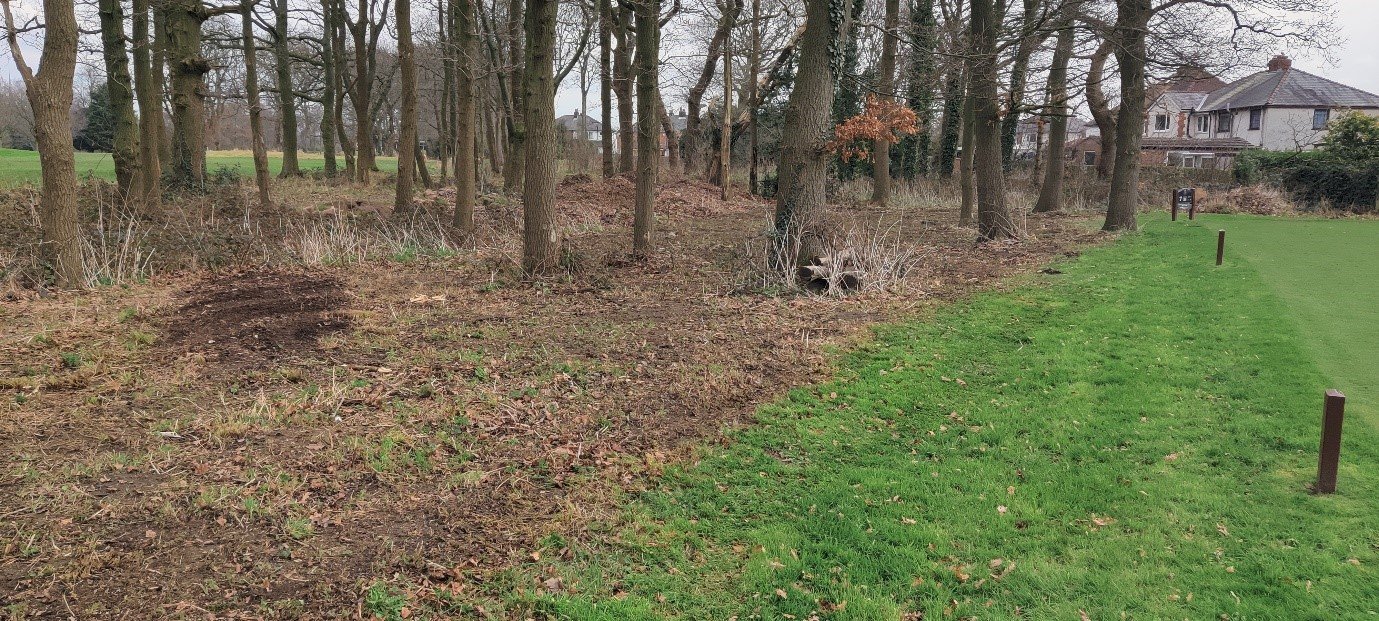Greens Update - March 2023
Hi all,
As I type this update the course is covered in snow, as is most of the country. Luckily this will be short lived and should be the last snow for a while as the temperatures look like they are increasing. However, with that comes excessive moisture and significant rainfall. The increase in temperatures is most welcome, but the rain is not.
Figure 1: Overnight snowfall covering
The course in general had dried out somewhat after February had only produced 9mm of rainfall, compared to 145mm the previous February. However, this is about to change as we are in for another wet week ahead. I don’t think we are quite out of the woods just yet regarding the weather and we will all have to show patience during this time. Below is an extract from Mark Hunt at Pro Data Weather Systems’ Blog. It’s an interesting read and you can sign up to receive email updates should you wish…
“One of the potential enduring features of the recent Sudden Stratospheric Warming is the shifting of the jet stream to a more southerly position. This has two key affects. Firstly, cooler air from the north will prevail keeping temperatures I think to below the March average and secondly, Atlantic low pressure systems will have no block in place to prevent them swinging over to affect our weather. So I'd say that puts the first half of March down as cool and unsettled I think.”
So this means that in general there is not much movement in regard to growth out on the course. Growth potential is very low as usual at this time of year, especially when you are hit with frosts and snowfall. As mentioned there does look to be a slight temperature increase coming so hopefully the soil temperatures will follow suit and grass will start to grow.
The greens have all been aerated before the snow fall with a chisel tine down to a depth of about 75mm. This will help to keep the surfaces free from the incoming moisture and allow roots to develop further.
Now some greens are not looking their very best right now and we are doing whatever we can to make them better.
Figure 2: Front left of 1st green about 3 weeks ago
Back in early January I informed you of the following:
Certain greens have suffered a bit during these last few weeks or so and that has been caused by a number of factors. The period before Christmas when the greens were subjected to extremely cold temperatures and icy conditions put the greens under stress. Obviously during this period we could not aerate the greens to help them breathe.
Once the thaw had happened on the greens, we sprayed a dew suppressant product on all greens to help keep the surfaces dry over the Christmas period. Keeping the greens as free from dew as possible during this time does help to prevent fungal diseases such as Fusarium occurring. It is a common greenkeeping practice. It seems that some of the more compacted and worn areas of the greens, such as the front left of the 1st where everyone tends to walk on and off after play, have suffered the most. The greens will recover as the weather improves, and we will continue to nurture them back to full health over the coming weeks.
Some of the recovery work we have carried out has included solid tine aeration, micro hollow core aeration, topdressing, overseeding and granular and liquid nutrition. We have also treated all the localised worst areas with extra work too. So we are doing all we can to alleviate the issues with the greens, and I have no doubt that once the soil temperatures do increase, we will see much better recovery. We have overseeded with bent grass and also some ultra fine dwarf rye grass in the worst areas. The bent will take time to come through, so the addition of the dwarf rye should speed up the return to full coverage.
Figure 3: 1st green recovery work, dressing, aeration and overseeding.
I have spoken with plenty of other course managers and industry reps and I am hearing of other courses that have suffered in a similar way.
These localized areas will definitely recover soon and the more we can leave them without foot traffic, the better. That is why we have been resting certain greens over the last few weeks. We thank you for your patience during this time.
This week we have also had another fantastic demonstration of the Amazone Profihopper flail, cut and collect machine. We tried it out on different areas of the course, and see it as a tool that would help to keep the more out of play areas much more tidy going forward. It can also help to thin out deep rough, making it much more playable in the future.
Figure 4: Left of 7th tee box. Thinned out, ready for development.
Figure 5: Back of 5th green. All long grass, cut and collected.
All the staff are just as eager as the members for the warm weather to return, so that we can try and present the golf course to its maximum potential. We are fully aware that time is ticking towards the new playing season and we will continue to do everything we can to provide the best possible course.
Steve Hemsley
Head Greenkeeper





